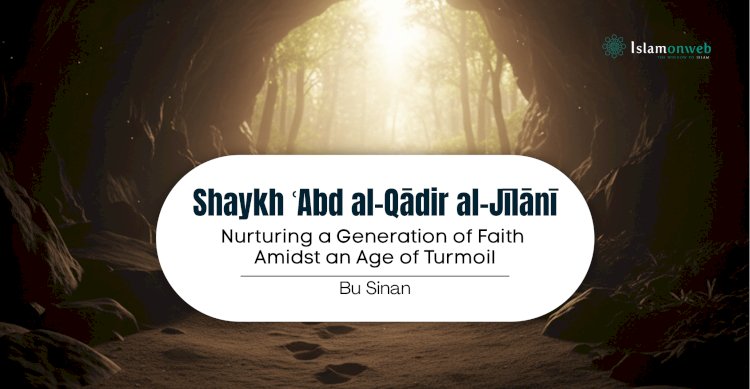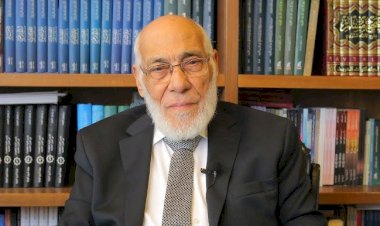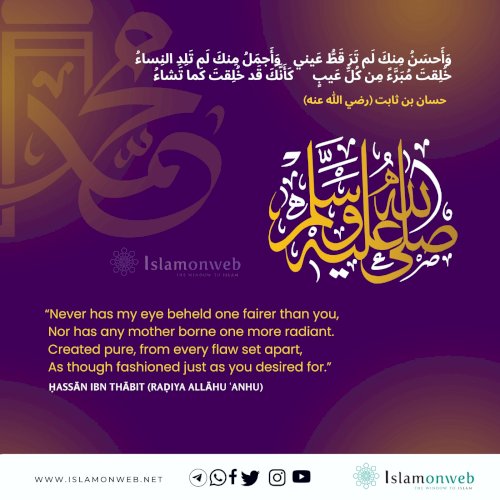Shaykh ʿAbd al-Qādir al-Jīlānī: Nurturing a Generation of Faith Amidst an Age of Turmoil
Hundreds of millions of Muslims across the globe revere Shaykh ʿAbd al-Qādir al-Jīlānī, often addressing him as al-Bāzī al-Ashhab — “the Grey Falcon” — a symbol of strength and purity that soared high above the horizons of Islamic history. He transformed the fiqh of tarbiyah — the nurturing of souls — from the quietude of prayer niches into the vitality of social life, the chronicles of history, the noise of markets, and even the gallop of steeds on the fields of victory. His presence was not confined to the cloisters of worship but spilled over into the lived reality of Muslim society.
When Shaykh ʿAbd al-Qādir al-Jīlānī settled in Baghdad, he inherited the madrasa of his teacher Abū Saʿīd al-Mubārak al-Mukharramī. From there, his majlis became a beacon, attracting students, jurists, ascetics, and ordinary believers who came to drink from his knowledge and character. His reputation spread across the Muslim lands until he was described by his student Ibn Qudāmah al-Maqdisī as Muḥyī al-Dīn — the reviver of religion — and as the imām to whom the leadership of Baghdad in knowledge, practice, spirituality, and fatwā ultimately converged.
For Shaykh ʿAbd al-Qādir al-Jīlānī, taṣawwuf was never about robes or outward signs. In his seminal work al-Ghunyah li-Ṭālibī al-Ḥaqq wa-l-Dīn, he defines it simply as:“Truthfulness with al-Ḥaqq (Allah) and good character with creation.”
To him, the true ṣūfī was:
“One whose inward and outward are purified by following the Book of Allah and the Sunnah of His Messenger ﷺ. The genuine ṣūfī’s heart becomes clear of everything except his Lord. This is not achieved by donning patched garments, rubbing one’s face in dust, gathering shoulders together, moving the tongue with litanies, or narrating stories of the righteous — but by sincerity in seeking Allah, detachment from the world, emptying the heart of created beings, and stripping oneself of everything besides one’s Lord.”[1]
This teaching placed him firmly among the reformers of his age: a man who welded fiqh and taṣawwuf into a single path of sound creed, lawful action, and sincere spiritual striving.
Al-Jīlānī’s Renewal Amid a World in Turmoil
The era of Shaykh ʿAbd al-Qādir al-Jīlānī was one of turbulence and fragmentation. The ʿAbbāsid caliphate, once the unifying authority of the Muslim world, had shrunk into a symbolic power. Real control was divided among competing dynasties, each vying for the caliph’s recognition while waging wars against one another. This political disunity left deep scars on every field of life.
The age was further darkened by natural disasters — earthquakes, droughts, and famines — recorded in detail by historians, who described their destructive impact on society. Social structures weakened, poverty spread, and the masses looked for stability in a world of uncertainty.
Meanwhile, external threats loomed large. From the east, the Mongols were pressing at the borders. From the west, Crusader armies occupied key lands and threatened the very heart of Muslim civilisation. The great cultural centres — Baghdad, Damascus, Cairo — were all theatres of conflict with external threats and internal rivalries. Muslim rulers at times even sought the aid of foreign powers against one another, further eroding unity.
On the intellectual and religious front, sharp disputes flared between kalām schools and fiqh madhāhib, contributing to the fragmentation of the ummah’s collective vision. Society, shaken by political weakness and foreign invasion, was marked by a fragile social fabric. Yet paradoxically, this same age produced towering figures — Ibn al-Jawzī, al-Ghazālī, and ʿAbd al-Qādir al-Jīlānī — who embodied the resilience of Islamic thought.
In this condition of turbulence and fragmentation, al-Jīlānī undertook a tajdīdī movement (reformist revival) to rekindle the spirit of īmān in people’s hearts. His Madrasah Qādiriyyah was established on the foundation of waqf (endowment), ensuring food and lodging for its seekers of knowledge. This sustainable model allowed his school to flourish and send forth its graduates to every corner of the Muslim world.
From Baghdad, his students opened nearly four hundred affiliated madrasahs across the Islamic lands, all following his method of combining law, spirituality, and moral discipline. At the time, al-Quds had been under Crusader control for almost ninety years. Al-Jīlānī’s school became a centre for building men and women of īmān, preparing them spiritually and intellectually to be reformers and leaders. The unifying slogan was: “Each follows his own fiqh and intellectual school — but our common goal is one: to liberate Jerusalem from the Crusader occupation.”
Remarkably, this movement extended to women as well. History records that during the era of Ṣalāḥ al-Dīn al-Ayyūbī, there were around 800 women in al-Shām alone who held ijāzah in iftāʾ, all graduates of al-Jīlānī’s original school or its branches. This is a striking testimony to his holistic vision of tarbiyah — building a society of believers, men and women alike, anchored in faith, knowledge, and action.
By the time Ṣalāḥ al-Dīn emerged, he stood at the head of a generation deeply marked by this ethos: vibrant in īmān, ready for sacrifice, united around common values — foremost among them the liberation of Jerusalem. Al-Jīlānī instilled in his students not only spiritual zeal but also respect for diversity, affirming that every madhhab and school of thought had its space, so long as it remained within the framework of Qurʾān and Sunnah[2].
In designing his school, al-Jīlānī also benefited from the example of his great predecessor, Imām Abū Ḥāmid al-Ghazālī, whose intellectual and reformist project had been nurtured by the Niẓāmiyyah institutions established by the Seljuq vizier Niẓām al-Mulk. Just as al-Ghazālī combined scholastic rigour with moral-spiritual renewal, al-Jīlānī advanced this model, but gave it a distinctively practical and tarbawī character.
The Qādirī School
The demand for his teaching quickly outgrew the madrasa he had inherited. By 528 AH, with the generous contributions of Baghdād’s people — so eager that even women offered their dowries as donations — a new Madrasah Qādiriyyah was built outside the city markets. It became a unique institution that combined mosque, university, lodging, and ribāṭ.
Here, Shaykh ʿAbd al-Qādir taught and trained students until his death in 561 AH. His lessons inspired waves of repentance and reform in Baghdad, curbing many public vices and reviving devotion among the people. His concern was not only to teach, but to shape men who could return to their towns as teachers, judges, and spiritual guides. Thus, the Qādirī method spread far and wide through his students, who became ambassadors of his tarbiyah.
In his school, he trained cadres who could carry this vision of daʿwah to their own regions, firmly grounded in a structured and authentic methodology. It is recorded that he would speak on thirteen different sciences. In his madrasa, students studied tafsīr, hadith, fiqh, and khilāf, while mornings and evenings were devoted to tafsīr, hadith, madhhab, uṣūl, and Arabic grammar. After ẓuhr, he would recite and teach the Qurʾān in its various qirāʾāt[3].
His tarbiya combined rigorous academic training with deep spiritual education. He prepared his students not only to become scholars but also reformers who could first rectify themselves and their families, and then serve as guides in reforming and uplifting the ummah in line with the Qurʾān and the Sunnah of the Prophet ﷺ.
From his Baghdad base, the Qādiriyyah branched into many thriving institutions.
- The ʿAdawiyyah School: Founded by ʿAdī ibn Musāfir al-Hakkārī (d. 557 AH).
- The Qurashiyyah School: Established by ʿUthmān ibn Marzūq al-Qurashī, a vocal opponent of the Fāṭimid state and supporter of the Zangids and later the Ayyūbids, rallying his followers to join Nūr al-Dīn ibn Zangī.
- The Harīmīyah School: Founded by Abū al-Suʿūd al-Ḥarīmī, one of ʿAbd al-Qādir’s closest disciples and his successor in leadership.
- The Jabbāʾiyyah School in Iṣfahān: Founded by ʿAbd Allāh al-Jabbāʾī, once a Christian who embraced Islam and studied under al-Jīlānī for twenty years before returning to Iṣfahān to spread his teachings.
Through such branches, the Qādiriyyah spread across the Islamic world, establishing a legacy of schools, mosques, and centres of learning. Its leaders combined scholarship and spirituality with activism and even political support, often linking their taṣawwuf with jihād and social reform.
Today, millions of Muslims around the world trace their spiritual lineage back to Shaykh ʿAbd al-Qādir al-Jīlānī. The Qādiriyyah remains one of the most widespread ṭuruq in the Muslim world, renowned for its balance of sharīʿa and ḥaqīqa, scholarship and spirituality.
Public Preaching and Criticism of Scholars and Rulers
Alongside his teaching and training of scholars, Shaykh ʿAbd al-Qādir al-Jīlānī never abandoned the pulpit of public preaching. He dedicated three days each week to preaching: Friday mornings, Tuesday evenings in his madrasa, and Sunday mornings in the ribāṭ. His sermons attracted immense crowds — chroniclers counted as many as four hundred inkwells in a single session, as students recorded his words. Many of these sermons were preserved in his celebrated work al-Fatḥ al-Rabbānī, complete with their dates and locations
Shaykh ʿAbd al-Qādir al-Jīlānī رحمه الله did not neglect any segment of society in his mission of tarbiya. Even the elderly were given special sessions devoted to education and enrichment. His sole purpose was clear and noble: to spread the knowledge of the sharīʿah to all — young and old alike — in order to eliminate illiteracy and dispel ignorance, so that hearts might be illuminated with the light of knowledge and clarity. Through these efforts, people were able to understand the essentials of their religion and distinguish what truly belonged to Islam from what did not[4].
His sermons were not abstract discourses but impassioned calls to revive Islam. He lamented the decline of the dīn: “The walls of Muḥammad’s religion are collapsing, its foundations crumbling. Come, O people of the earth, let us rebuild what has fallen.” In another, he said: “Subḥān Allāh who cast into my heart the concern for creation and made it my greatest care. My joy is in your salvation, my grief in your ruin.”
Shaykh ʿAbd al-Qādir al-Jīlānī boldly addressed the shortcomings of his time. He witnessed how many scholars and preachers competed unethically for prestigious pulpits, seeking favour with rulers and ministers, and how others became entangled in sectarian disputes and poor conduct. For some, knowledge and religion had been reduced to a trade for status and worldly gain.
In one of his admonitions, he declared:
“O you who snatch the world by the road of the Hereafter from the hands of its rightful people! O you ignorant of the Truth — you are more deserving of repentance than the common people, more in need of confessing your sins than they are. There is no good in you.”
In a sermon delivered at his school on 9 Rajab 546 AH, he said:
“If you had truly tasted the fruit and blessing of knowledge, you would not hasten to the doors of rulers in pursuit of your desires. The true scholar has no feet to walk with towards the doors of men. The true ascetic has no hands to seize the wealth of people. The true lover in Allah has no eyes to look upon other than Him.”
Equally, he strongly opposed blind sectarianism, urging Muslims to move beyond partisanship in fiqh or theology and to focus on what benefits both faith and life:
“Leave aside talk of what does not concern you. Abandon fanaticism in madhhabs and occupy yourself with what will benefit you in this world and the next.”[5]
Shaykh ʿAbd al-Qādir al-Jīlānī was also fearless in his criticism of rulers, governors, and officials. In his sermons, he warned people against blind obedience to authority when it contradicted the sharīʿah. In one of his gatherings he declared:
“For many people, kings have become their gods. Wealth, health, strength — all have become idols. Woe unto you! You have made the branch the root, the dependent the provider, kings the true sovereigns, the poor as rich, the powerless as strong, the dead as living. When you glorify the tyrants of this world, its pharaohs and its kings, forgetting Allah and failing to exalt Him, your ruling is the ruling of idol-worshippers. That which you have magnified has become your idol.”
His boldness went beyond general admonitions. In 541 AH (1146 CE), Caliph al-Muqtafī appointed Yaḥyā ibn Saʿīd (Ibn al-Murajjam) as judge. He became notorious for injustice, seizing wealth and taking bribes. Pamphlets denouncing him were posted in mosques and streets, but none dared confront him openly. According to Sibt Ibn al-Jawzī, when the caliph attended a mosque, al-Jīlānī seized the moment, addressing him directly from the minbar:
“You have appointed over the Muslims the most unjust of the unjust. What will your answer be tomorrow before the Lord of the Worlds?”
The caliph promptly dismissed the corrupt judge[6]. Such episodes repeated with ministers and officials, who nonetheless continued to listen to al-Jīlānī’s counsel, convinced of his sincerity, piety, and truthfulness[7] Notably, he never sought their company nor courted political power; historical accounts stress that he never once stood at the door of a ruler[8]
Al-Jīlānī’s reformist critique extended beyond rulers to the broader society of his age, which he described as plagued by hypocrisy, injustice, and unlawful gain. He lamented how even acts of worship were hollowed out by ostentation:
“This is a time of hypocrisy and false show, of taking wealth unlawfully. Many pray, fast, perform ḥajj, and give zakāh — but they do so for people, not for the Creator. Most people today are without a true Lord. All of you are dead of heart, alive only in your egos, seekers of the dunya.”[9]
Transforming Hearts Through Tarbiya
The effectiveness of Shaykh ʿAbd al-Qādir al-Jīlānī’s tarbiya was most visible in its impact on society. His method was not confined to producing scholars or ascetics; it reached into the very fabric of Baghdad, touching those at the margins of morality. He himself said:
“More than one hundred thousand of the thugs and bandits repented at my hands — and this is a great blessing.”
Shaykh al-Sayyid ʿAbd al-Qādir al-Jīlānī رحمه الله was an institution in himself, a school of knowledge, discipline, and spiritual refinement. Through his life and legacy, he became a central figure in nurturing a new generation, one that understood how to elevate its society while drawing closer to Allah.
He combined scholarship with spirituality, courage with humility, reform with tradition, leaving behind not only books and sermons but men and women who carried his vision across the Muslim world. His message continues to remind us that true renewal lies in sincerity with Allah, service to His creation, and building institutions that purify hearts and strengthen communities.
References:
[1] ʿAbd al-Qādir al-Jīlānī, al-Ghunyah li-Ṭālibī Ṭarīq al-Ḥaqq,
[2] Mājid ʿArsān al-Kīlānī, Hākaḏā Ẓahara Jīl Ṣalāḥ al-Dīn wa-Hākaḏā ʿĀdat al-Quds, p. 251.
[3] al-Ṭabaqāt al-Kubrā by al-Shaʿrānī, 1/108
[4] Qalāʾid al-Jawāhir, p. 179, abridged
[5] Mājid ʿArsān al-Kīlānī, Hākaḏā Ẓahara Jīl Ṣalāḥ al-Dīn wa-Hākaḏā ʿĀdat al-Quds P. 199.
[6] (Mirʾāt al-Zamān, 8/265)
[7] (Ṭabaqāt al-Ḥanābilah, 1/292)
[8] (Qalāʾid al-Jawhar, pp. 19–30).
[9] Mājid ʿArsān al-Kīlānī, Hākaḏā Ẓahara Jīl Ṣalāḥ al-Dīn wa-Hākaḏā ʿĀdat al-Quds, p. 203.
Disclaimer
The views expressed in this article are the author’s own and do not necessarily mirror Islamonweb’s editorial stance.
























Leave A Comment